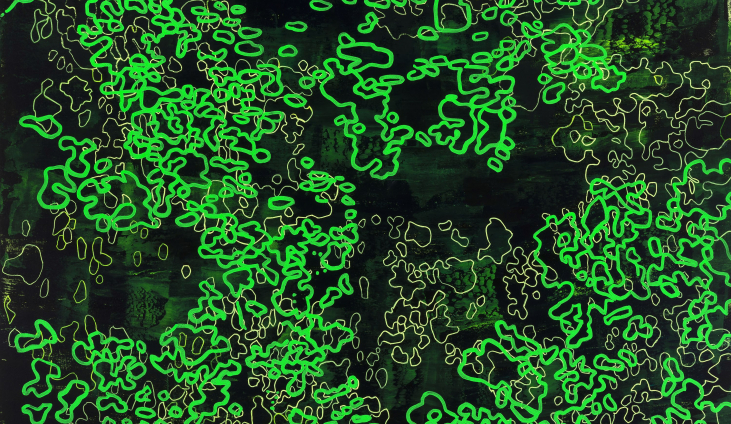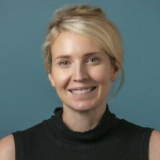(August 2, 2021- Philadelphia) -- The Science Center’s Esther Klein Gallery is reopening for the first time since April, with Socius, a new solo exhibition by Philadelphia artist, Rebecca Rutstein. Rutstein recently completed a BioArt Residency designed in partnership between the Science Center and the biotech company Integral Molecular, where she spent three months working alongside laboratory scientists. The culmination of this residency is an exhibit of large and small-scale paintings and a multi-media installation.
Inspired by the Latin word for “bond” or “interaction” and deriving from societas, the derivative for “society,” Rutstein’s work is an exploration of the effects of SARS-CoV-2 virus both at the cellular micro level, and also at a macro level amongst the community.
Many of the works on view are inspired by microscopic observations of communities that living cells create, as well as cells fluorescing as they are infected with the virus using Integral Molecular's Reporter Virus Particle (RVP) technology. Using fluorescence, RVPs allow us to visualize human cells being infected upon interactions of viral spike proteins with receptors on the cell surface, and have been a tool for discovering protective antibodies that neutralize the virus. At the macro level, two paintings which track data of infections and deaths show racial inequities and disparities during the pandemic, and the contrasting effects on different minority communities.
Also on view is Rutstein’s immersive sculpture, light and sound installation. Sub Surficiem,
inspired by the artist’s observance of living cells through a
microscope, is a sculptural installation backlit with LED lights
programmed to simulate a video time-lapse of living cells fluorescing as
they become infected with SARS-CoV-2 using Integral Molecular’s RVP
technology. Confluence is the sound component to Sub Surficiem
and its macro counterpart. This five-minute piece is a sonification of
data that tracks COVID-19 cases, deaths and vaccinations in
Philadelphia, each set of data its own track layered into the
composition. The digital rendering of a full range of stringed
instruments was created in collaboration with Mexican composer Mauricio
Rodriguez, NEA fellow and Doctor of Musical Composition from Stanford
University. Philly-based musician, Frank Masciocchi (part of the
Integral Molecular team) also contributed interpretive guitar sounds
creating ambient dissonance within the piece.




